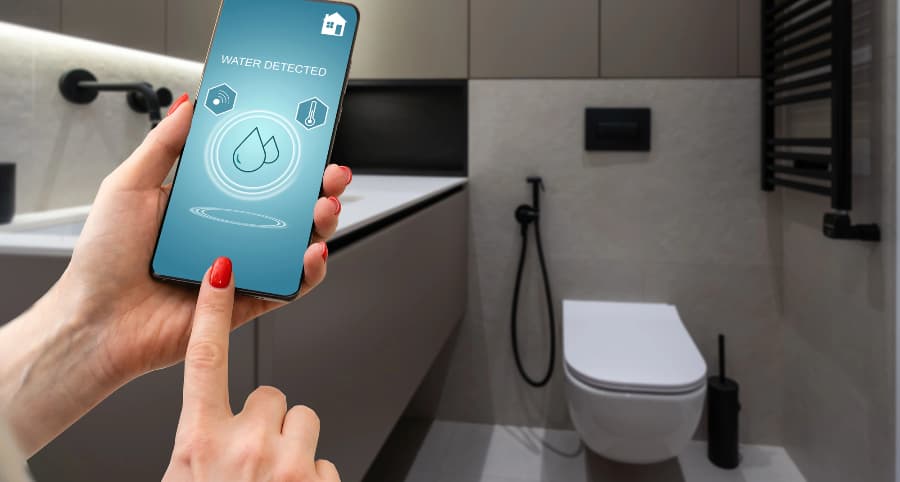How does a water sensor work and why connect one to your Lancaster smart home?

One small leak in your home can lead to significant issues and thousands of dollars in damage. You must protect against this threat; luckily, there’s a simple way to accomplish this. A water sensor is an effective, simple, and affordable solution. Learn how they work and why you might integrate water sensors into your Lancaster smart home.
How water sensors shield Lancaster your home
Water enters homes in various ways, whether from a storm-related incident, plumbing failure, appliance malfunction, or human error. However it occurs, you must know right away, and this is why water sensors are important. But how do they really work?
The majority of water sensors are conductive and work with a pair of electrodes. When water infiltrates the area between the electrodes, an electrical connection is established, triggering your alarm. You’ll also discover capacitive sensors that release an electrical field. When water contacts the conductive surfaces of these devices, the field is broken, and your alarm activates. Optical sensors utilizing infrared LED light are another choice.
Get more from your water sensor
A few specialized water sensors provide even more peace of mind as they use integrated temperature sensors. This is a helpful way to prevent pipe freezing. If there’s an extreme drop in temperature, you’ll be notified immediately. Taking steps before pipes rupture will save you from flooding and costly repairs.
Why incorporate water sensors into your Lancaster smart home?
When water problems occur, you must be alerted immediately. You can attain this goal by connecting water sensors to your smart home. Whether you’re there to hear the alarm or away, you’ll be sent an automatic update on your cell phone. In addition, your 24/7 monitoring specialists will be informed. Every moment is critical in a water emergency to limit the destruction and disturbance to your household.
Where should you place water sensors?
Any spot prone to an influx of water is an appropriate position for water sensors. Think about installing in these spots:
- Bathrooms: Place next to tubs or at the back of toilets.
- Basements: Water frequently infiltrates basements via cracked walls or as a result of excessive rain or faulty sump pumps.
- Next to water heaters or appliances: Any water-using appliance may leak over time.
- Underneath sinks: Water sensors are perfect for identifying pipe leaks in locations hidden from view.
- Attics: Detect roof leaks early and prevent costly damage.
Get water sensors with your Vivint smart home
Give your property the complete protection it requires with Vivint’s innovative tools. Our water sensors in Lancaster integrate with your Vivint cell phone app to deliver automatic notifications when your alarm goes off. You also get integrated temperature sensors to prevent frozen pipes. Learn more about the smart home devices available in Lancaster by calling (717) 922-5237 today.
